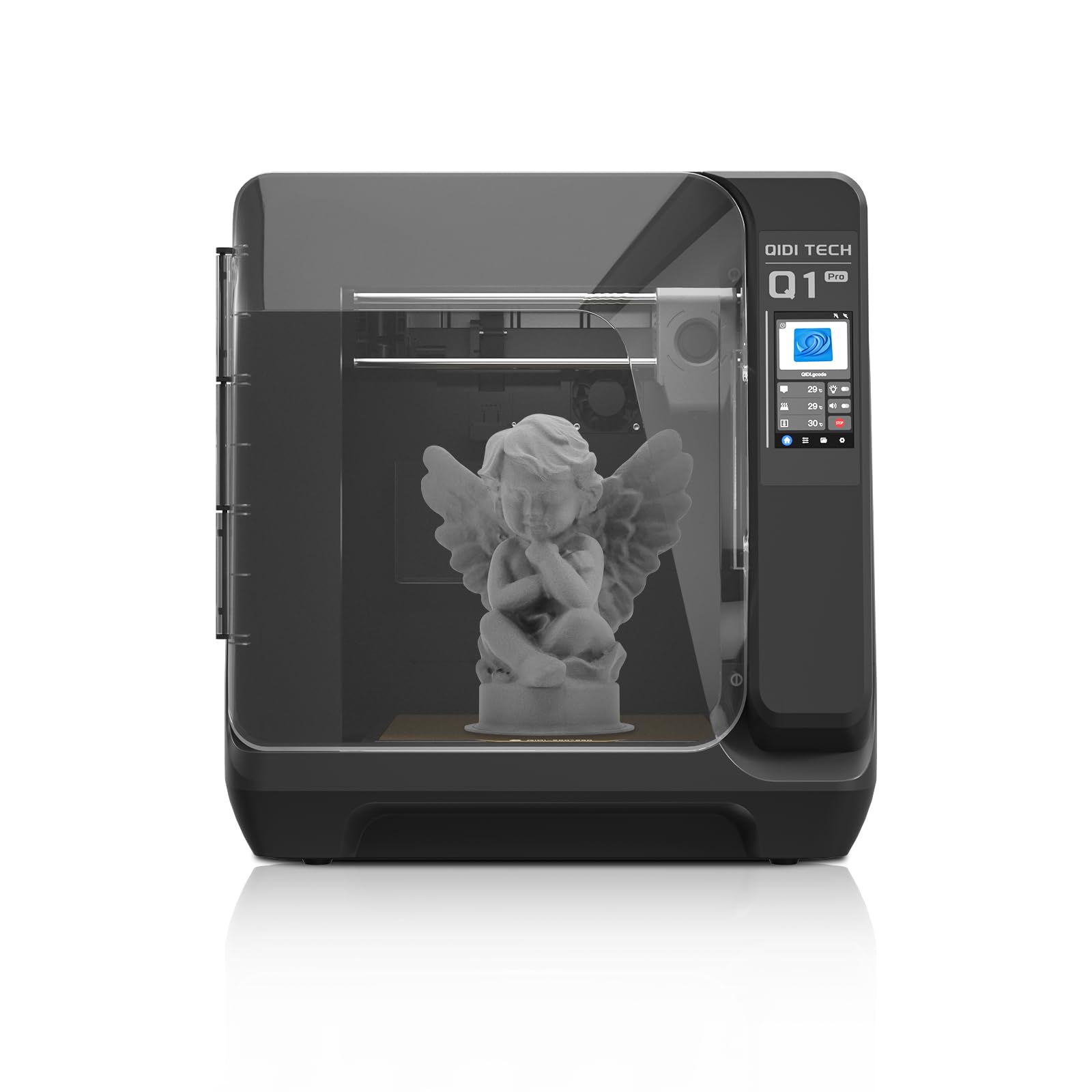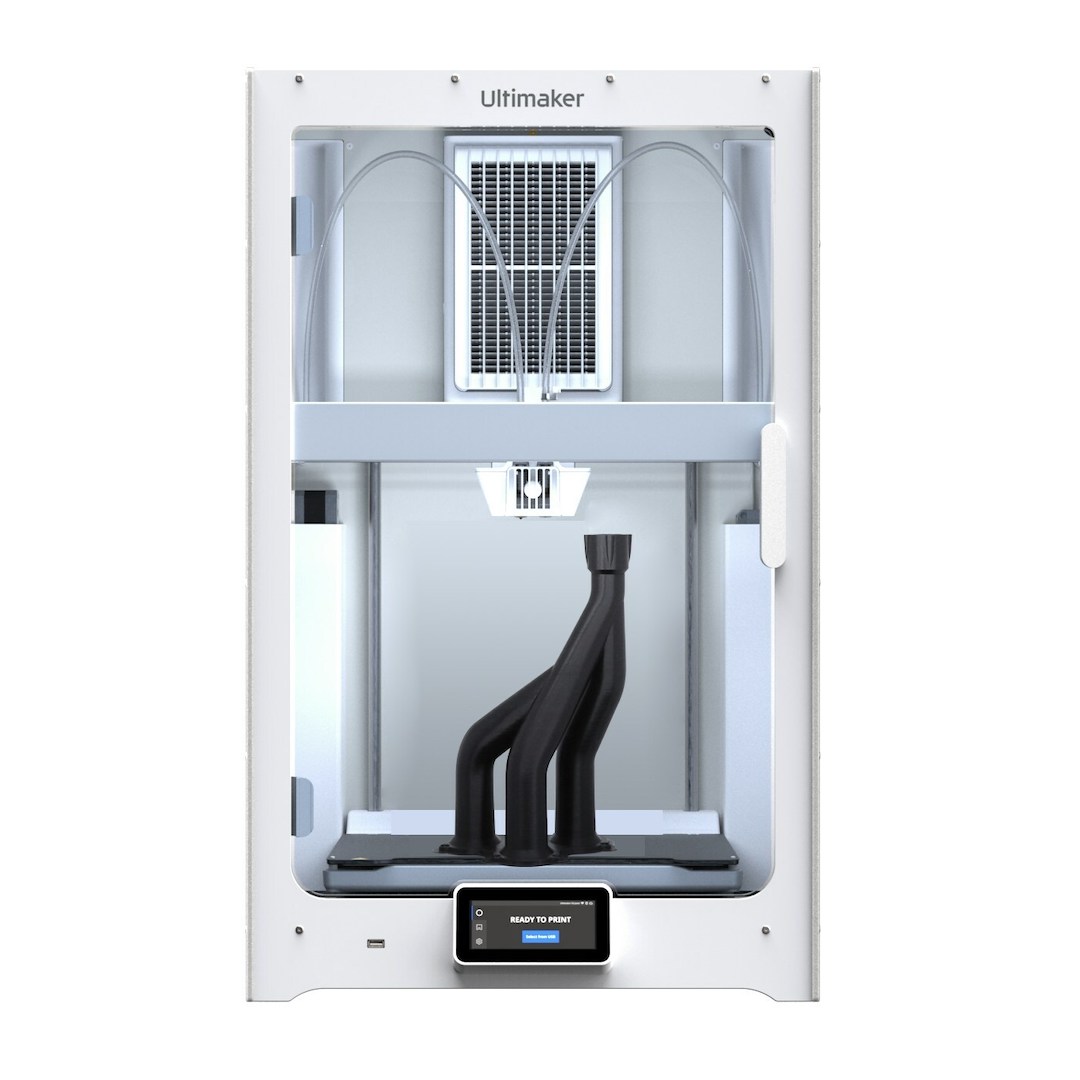Compare Q1 PRO vs S7
Comparison between the best 3D printers
Choose the best 3D printer at the best price. The cheapest 3D printers are here.
Buy a 3D printer here with 3D Fila.
 |
 |
|
| Model | Q1 PRO[BUY Q1 PRO] |
S7 |
| Printing Material | Filament | Filament |
| Buy Filament for QIDI Q1 PRO | Buy Filament forUltimaker S7 | |
| Estimated price | $449,00 | $8300,00 |
| Manufacturer | QIDI | Ultimaker |
| Release Year | 2024 | 2022 |
| Print Volume [mm] | 245x245x245 | 240x330x300 |
| Printer Size [mm] | 467x477x489 | 585x495x800 |
| Weight [kg] | 20 | 29 |
| Power Loss Recovery | YES | YES |
| Enclosed printer | YES | YES |
| Bed Leveling | Automatic | Automatic |
| Filament End Sensor | YES | YES |
| Bed type | Heated | Heated |
| Power supply system | Direct Drive | Bowden |
| Standard nozzle | 0,4 | 0,4 |
| Maximum Nozzle Temperature [°C] | 350 | 280 |
| Maximum Bed Temperature [°C] | 120 | 120 |
| Maximum printing speed [mm/s] | 600 | 180 |
| Filament holder | YES | YES |
| Camera for supervision | YES | YES |
| Recommended filaments | PLA、ABS、ASA、PETG、TPU、PC、PA、PA-CF、PET-CF、PAHT-CF etc. | PLA, ABS, PETG, PC, Nylon, Tritan, PP |
| Recommended slicers | QIDI Slicer/Cura/Simplify 3D/ORCA/PRUSA Slicer | Cura |
| Maximum Resolution [mm] | 0,1 | 0,1 |
| Processor | Cortex-A53,64-bit Processor | |
| Display | Touchscreen 4,3'' | Display touchscreen 4,7'' |
| Power Supply | 350 W | 500 W |
| Connectivity | WiFi/USB Flash Drive/Ethernet Cable | USB / Wi-Fi |
| Operating systems | Windows, Linux, Macbook | Windows, Mac, Linux |
| Date of registration in the system | 2024-07-09 | 2023-01-28 |
| Release date | 2024 | 2022 |
| Extra features | The QIDI Q1 Pro 3D printer stands out for its Core XY structure and heating chambers that reach up to 60ºC, ideal for advanced materials such as ABS and Nylon. It features Klipper firmware, an automatic leveling system, a high-flow extruder with a double metal nozzle and a hotend that reaches 350ºC. It offers connectivity via Wi-Fi, USB and Ethernet, as well as a 1080p camera for remote monitoring and an intuitive touchscreen for easy operation. | The UltiMaker S7 printer features a series of technological innovations to enhance 3D printing. It incorporates a flexible, magnetic build plate with PEI coating, promoting better adhesion and easier part removal. Its new inductive sensor significantly improves bed leveling, ensuring perpendicular and accurate prints. In addition, the S7 has a higher quality camera for remote monitoring, an integrated air filter, and uses a unique glass door to maintain a constant temperature in the print chamber. The machine is also compatible with the expansion kit for metal printing. |
| Support for multiple colors and materials (AMS and CFS) | NO | NO |
Notes * |
||
| Cost-benefit | 8 / 10 | 1 / 10 |
| Hardware | 4.8 / 10 | 3.6 / 10 |
| Tela | . | . |
| Print volume | 3 / 10 | 4 / 10 |
| Performance | 5 / 10 | 1 / 10 |
| [BUY Q1 PRO] |
Conclusion |
| In comparing the QIDI Q1 Pro and the Ultimaker S7, several important factors stand out, particularly when considering price, features, and overall performance. The QIDI Q1 Pro emerges as the more cost-effective option, delivering impressive specifications and a robust feature set, including a maximum nozzle temperature of 350°C, a high maximum printing speed of 600 mm/s, and a versatile platform that supports a wide range of filaments such as PLA, ABS, and Nylon. Its automatic bed leveling system, power loss recovery, and an intuitive touchscreen interface enhance user experience while affording great ease of use. Furthermore, the inclusion of a 1080p camera for remote monitoring is a notable advantage for users seeking oversight over their prints. On the other hand, the Ultimaker S7, while significantly pricier, offers advanced technological features aimed at professionals who prioritize quality and reliability. Its flexible, magnetic build plate facilitates better adhesion and the integrated air filter contributes to a safer printing environment. Noteworthy is its dedication to maintaining temperature stability within the print chamber, which can drastically reduce printing errors and improve final product quality. However, with a lower maximum printing speed and less versatility in material support than the Q1 Pro, it falls short in some performance aspects. In summary, the QIDI Q1 Pro provides a compelling option for hobbyists and those with budget considerations, boasting higher performance metrics for a lower investment. Conversely, the Ultimaker S7 caters more to professionals who are willing to pay a premium for enhanced features and build quality. Ultimately, the choice between the two will depend on the user's unique needs—whether they seek a cost-effective solution for varied projects or the refined capabilities offered by a higher-end model. |

